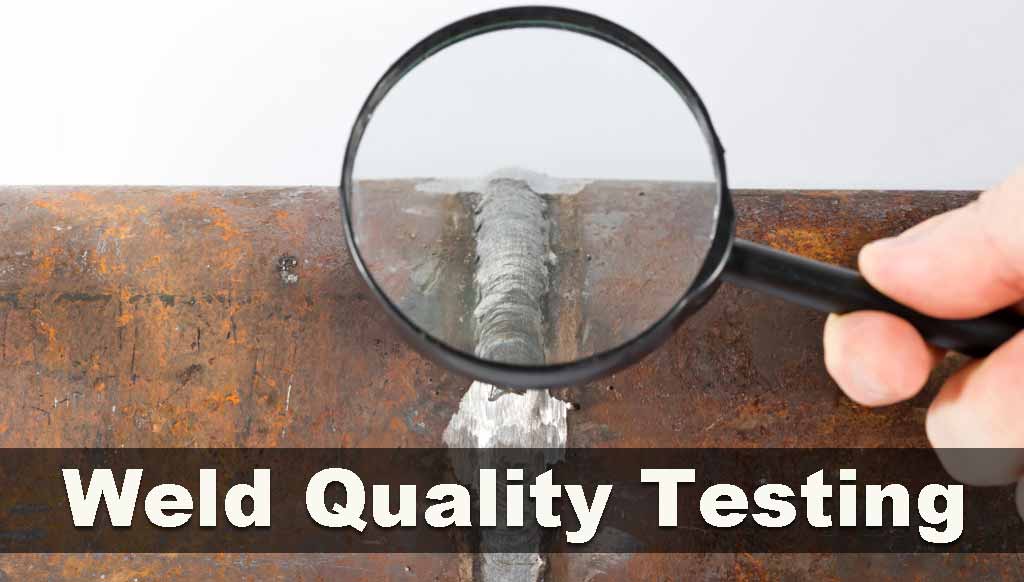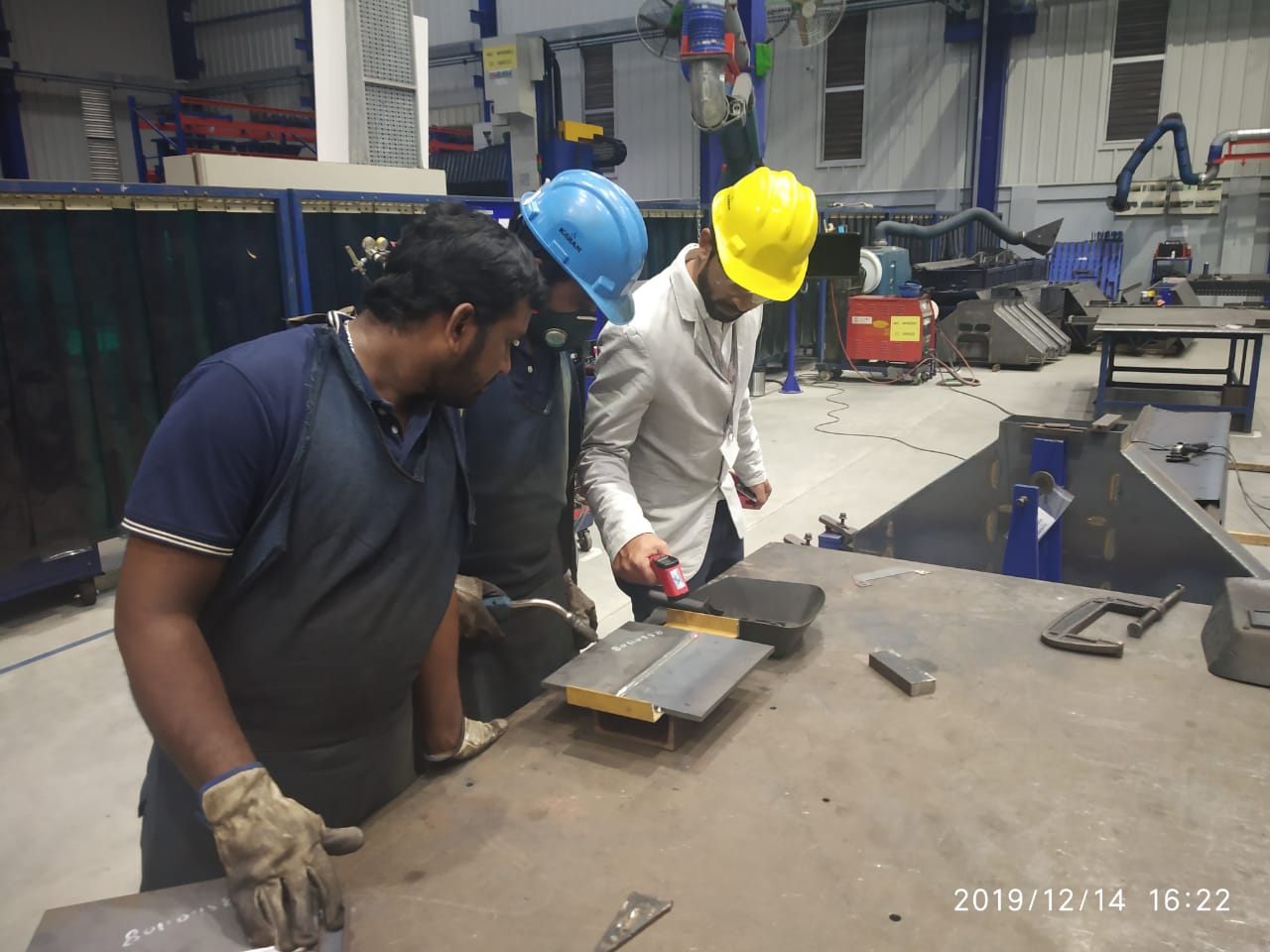Making Sure Security with Relied On Welding Inspection Milwaukee Techniques
Making Sure Security with Relied On Welding Inspection Milwaukee Techniques
Blog Article
A Comprehensive Checklist for Effective Welding Evaluation Practices
In the world of welding, the stability of structures is extremely important, requiring an extensive approach to evaluation practices. Exploring these critical elements can generate insights that exceptionally influence welding procedures.
Recognizing Welding Criteria
Welding standards play an essential duty in guaranteeing the high quality and safety of welded structures and components. These standards develop the standards for materials, treatments, testing, and examination, therefore providing a structure for consistent top quality assurance in welding processes. Numerous organizations, consisting of the American Welding Society (AWS), the International Company for Standardization (ISO), and the American Culture of Mechanical Designers (ASME), have actually created detailed requirements that govern various facets of welding.
Understanding welding requirements is important for professionals in the field, as adherence to these guidelines decreases the danger of problems and failings in welded joints. These requirements cover particular demands for weld high quality, including appropriate tolerances, the kind of welding methods to be used, and the qualifications needed for welders and assessors.

Pre-Welding Assessment Steps
Prior to any type of welding process starts, a detailed pre-welding evaluation is necessary to identify prospective problems that might endanger the high quality of the weld. This first step functions as an essential foundation for guaranteeing conformity with suitable welding codes and requirements.
The first step in the pre-welding evaluation is to confirm the products being made use of. This includes checking for the correct kind and quality of steels as defined in the job documents. Next off, it is crucial to evaluate the fit-up of the elements to ensure proper placement and joint configuration. Misalignment can bring about insufficient infiltration and structural weak points.
Furthermore, reviewing the cleanliness of the surface areas is essential; pollutants such as oil, paint, or rust can adversely influence the top quality of the weld. Following this, a complete analysis of the welding equipment should be performed, ensuring that it is adjusted and in good working condition.
Last but not least, evaluating the certifications of the welding employees is essential. Welders have to have the essential accreditations and experience to execute the specific welds needed for the task. By sticking to these pre-welding examination steps, the probability of flaws and failures in the last weld can be substantially decreased.

In-Process Inspection Techniques
In-process evaluation strategies play a crucial role in making certain the stability and high quality of welds as they are being executed. These techniques enable examiners to recognize defects or deviations from specifications in real time, therefore stopping costly repairs and making sure adherence to layout demands.
One key method entails visual inspection, where assessors examine the weld grain for harmony, penetration, and appropriate account. This can be enhanced by the use assesses to measure weld dimensions, making certain conformity with predetermined resistances. Additionally, the execution of non-destructive testing (NDT) techniques, such as ultrasonic testing or magnetic particle screening, during the welding procedure can reveal subsurface problems that may not be visible externally.
An additional important aspect is keeping an eye on welding criteria, including voltage, amperage, and take a trip speed. Uniformity in these specifications is critical for achieving optimal weld top quality. Recording these criteria during the welding operation provides a deducible document for future referral.
Educating personnel in correct inspection methods and the use anchor of proper tools improves the effectiveness of in-process examinations. By incorporating these practices, organizations can attain better welds, decrease rework, and eventually guarantee the security and dependability of bonded structures.
Post-Welding Top Quality Checks
Adhering to the completion of welding operations, post-welding high quality checks are critical to validate that the welds satisfy all specified demands and standards. These checks are crucial for making certain the stability and resilience of the bonded joints. The examination procedure normally starts with an aesthetic examination, evaluating for surface flaws such as splits, porosity, or insufficient blend.
Ultimately, non-destructive testing (NDT) methods, such as ultrasonic screening, radiographic screening, or magnetic particle screening, may be utilized to find interior defects that are not noticeable to the naked eye. Each technique has its unique benefits and is selected based upon the weld's area, product type, and the nature of the application.
Additionally, confirming dimensional accuracy is a vital aspect of post-welding top quality checks. This includes gauging the weld's account, dimension, and positioning to make certain conformity with engineering specifications. Assessing the mechanical homes of the weld, including tensile stamina and ductility, can provide further assurance of performance under operational problems. Generally, complete post-welding evaluations are essential for preserving security, efficiency, and adherence to governing and industry criteria.
Documents and Reporting
How can efficient documents and reporting improve the welding inspection process? Accurate documentation and thorough reporting are vital components that guarantee the stability and top quality of welding procedures. Welding Inspection Milwaukee. They act as an official document of examination searchings for, facilitating accountability and traceability in resource conformity with industry standards
A well-structured reporting system allows inspectors to clearly communicate any kind of inconsistencies, areas, or non-conformances needing enhancement. This openness cultivates a setting of continual improvement, as stakeholders can readily examine previous efficiency and implement restorative actions.
Moreover, reliable documentation includes comprehensive records such as welding treatment requirements (WPS), welder certifications, and assessment lists. These elements provide a structure for assessing weld quality and adherence to developed standards. In the event of disputes or high quality issues, detailed documents functions as a reputable reference, decreasing obscurity and shielding all events included.
Finally, keeping organized documents aids in training and accrediting workers, ensuring that sector finest techniques are supported. Ultimately, her explanation careful documents and reporting not only enhance the welding inspection process yet additionally contribute to the general safety and security and reliability of welded frameworks.

Conclusion
In final thought, a thorough checklist for reliable welding assessment practices is important for guaranteeing quality and safety and security in bonded frameworks. Adherence to developed welding requirements, precise pre-welding evaluations, extensive in-process examinations, and thorough post-welding top quality checks collectively add to the integrity of welded joints.
Welding criteria play a vital function in making sure the top quality and safety of welded parts and structures. Numerous organizations, including the American Welding Culture (AWS), the International Organization for Standardization (ISO), and the American Culture of Mechanical Designers (ASME), have developed extensive criteria that regulate various aspects of welding.
Adhering to the conclusion of welding procedures, post-welding top quality checks are important to verify that the welds satisfy all defined criteria and needs - Welding Inspection Milwaukee.In verdict, a detailed checklist for reliable welding assessment methods is important for making certain top quality and security in welded structures. Adherence to developed welding criteria, careful pre-welding examinations, strenuous in-process analyses, and extensive post-welding quality checks jointly add to the honesty of bonded joints
Report this page